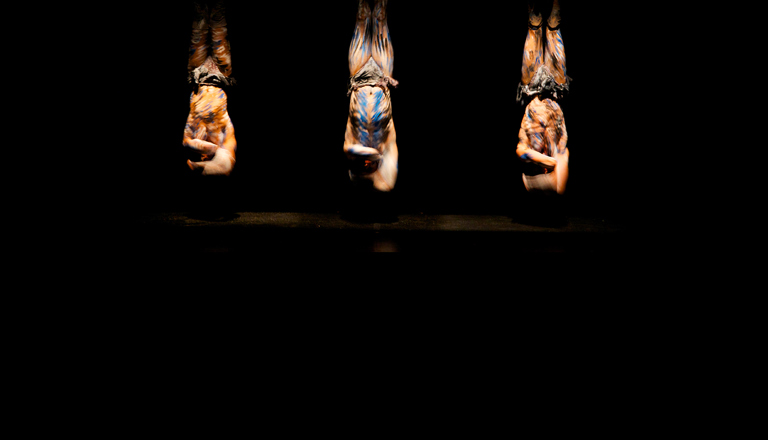Mutton Bird (2008)
Before Viewing
THINGS TO THINK ABOUT AND DO
What do students already know and are some things that they can do?
- Encourage the students to experience moving their body both individually and with others; showing awareness of their body in space and in relation to objects around them.
- Give them opportunities to develop an awareness of, and how they might be able to isolate different parts of their body and make specific actions and gestures.
- Include cross lateral movements in movement activities.
- Ask students to make contrasting shapes with their body (curved/angular; symmetrical/asymmetrical).
- Assist students understanding that movements can be used to explore and improvise dance ideas by controlling and combining different movement qualities.
- Give students opportunities to know that it is possible to show similarity and contrast through movement, for example: can they change the size and speed of their movement and follow pathways on the floor or in the air?
- Provide opportunities for students to practise controlling movement by pausing or freezing, and using contrasting qualities such as smooth and sustained, followed by percussive movement.
- Have students form groupings such as lines or group shapes, and lead or follow others in these groupings, moving close together or far apart.
- Give them experiences which assist them to understand that movements can be joined together in order to move on the spot or travel in different ways.
- Check that students are aware that they can interpret meanings from watching dance and that dances can tell a story which may have a beginning, middle and end.
- Encourage students’ recognition that people from different cultures dance and may have different reasons for dancing.
- Assist students to understand that when being an audience member, it is important to concentrate on experiencing the dance by watching and listening.
Pose questions that help them understand the ideas that the dance is based on?
- What does a mutton bird look like and how does it move? What are its habits and rituals? (nesting, feeding, migration, habitat)
- Where in Australia is this bird found?
- What are some other names used to describe this bird? (The Short-tailed Shearwater or Slender-billed Shearwater, Puffinus tenuirostris, Yolla or Moonbird)
- Does this type of bird live anywhere near you?
- Why is this bird killed for food and where does this happen?
- How are the chicks of this bird ‘harvested’?
Expand students understanding that contemporary Indigenous people participate in all facets of the community and as artists they may choose to communicate ideas based on traditional stories including those relating to animals which represent spirits.
- Who are the Aboriginal people/s who live in Tasmania?
- What is a cultural advisor?
- Who are the dancers of Bangarra? Where do they come from?
- Where is the company Bangarra based?

